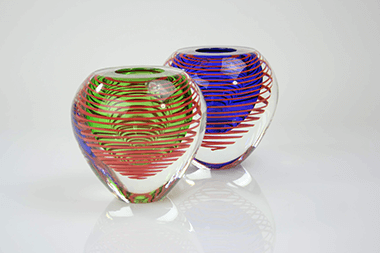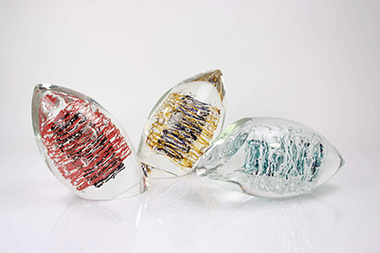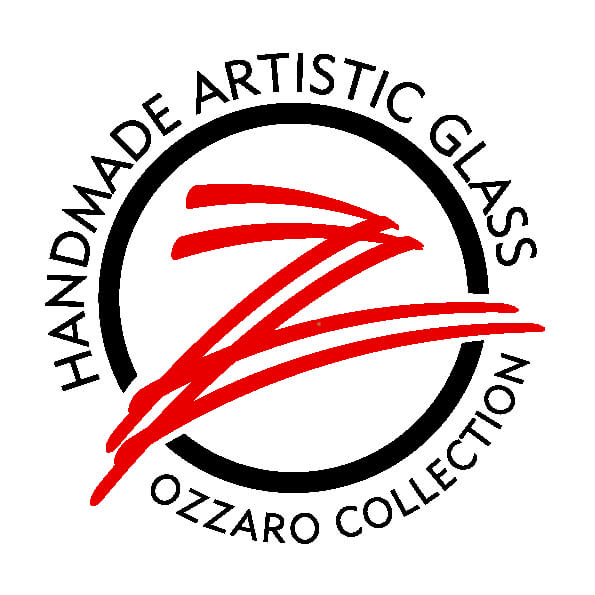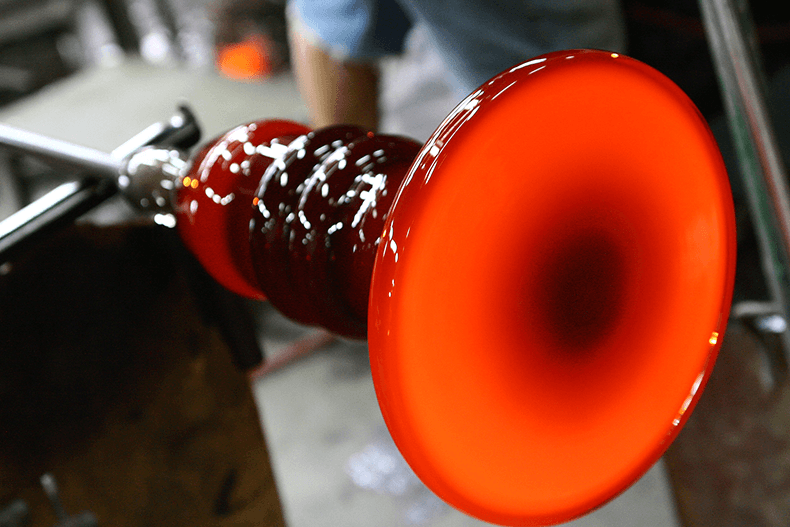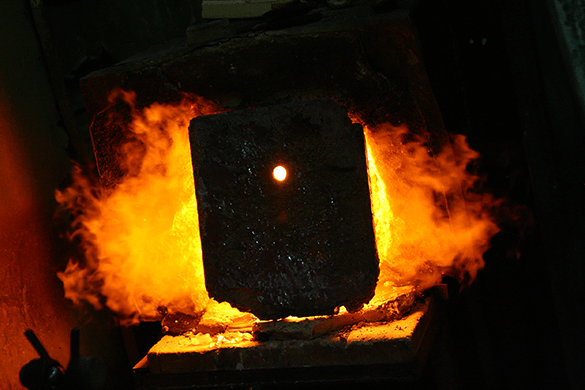
Raw materials and mixing colors
When manufacturing glass, the quality of the raw materials is of great importance. The major chemical constituents of glass are sand, lime, soda and potash. Key to producing high quality glass is the homogenous mixing of the ingredients, particle sizing and the density are crucial. Glass is originally colorless. Colors come from adding different metal oxides into the glass during the glassblowing process.
Blowing and shaping the glass
The raw materials will be heated inside a furnace, until the batch melts. The molten glass is gathered from the furnace with a blowpipe, and when the glass is stable, it will be shaped. Glass blowing is a difficult technique, for which a lot of patience and experience is needed. When shaping the glass, the blowpipe will be rotated regularly or reheated in the glory hole to retain the malleability of the glass. By blowing through the tube, a bubble (or parison) will grow, which can be shaped by hand or tools. During the blowing process the glassblower can color the glass by adding metal oxides.
Polishing and finishing the glass
A metal rod (a pontil) is attached to the base of the blown glass, so the mouth end of the glass object can be shaped. Once the glass object is finished, the pontil is sharply taped, so that it breaks free of the glass object. The mark this pontil leaves will be ground or polished away later. When the glass object is complete, it will be put in an annealer, which controls the rate of cooling. Finally, the piece of blown glass will be polished and ground.
Quality control
Prior to leaving the glass studio, the glass object is subjected to a thorough quality control test. The process of manufacturing glass art is true craftsmanship, which is why the glass objects will always differ in size and color.
